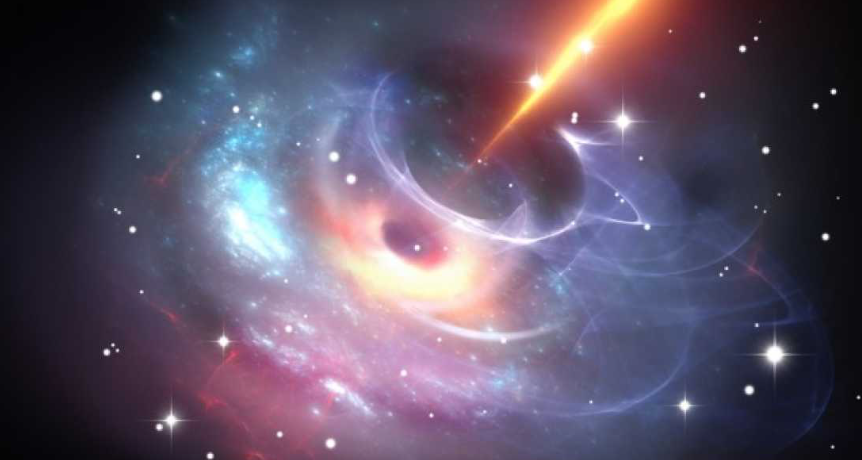
Photo Credit: iflscience.com
Astronomers from the National Observatory of Athens and the Niels Bohr Institute, used the largest X-ray sample up to date to investigate how active supermassive black holes (SMBH) at the centre of galaxies affect their star formation.
Galaxies that host an active SMBH are called Active Galactic Nuclei (AGN). Scientists know that there is a correlation between the activity of the SMBH and the star formation of the galaxy that it lives in. It is unclear, though, how strong is this dependence and whether it extends to all AGN regardless of how powerful they are. To measure the power of an AGN, astrophysicists measure their luminosity in X-rays (LX). For example, some previous studies suggest that AGN enhance the star formation of the host galaxy apart from the very powerful ones (LX>1044 erg/s) that suppress it. However, other studies claim that AGN always enhance star formation, regardless of their X-ray luminosity.
To shed light on this question, the astronomers’ team, used 3336 X-ray AGN from the XMM-XXL field, one of the largest X-ray field. They compiled AGN observations at different wavelengths of the electromagnetic spectrum, from the optical to the far infrared and studied the dependence of the star formation on the AGN power (LX). The innovative aspect of their research was that they compared their measurements with those from galaxies in the main-sequence, which is a well known correlation between the star formation and the stellar mass of a galaxy.
Their analysis revealed that AGN enhances the star formation of its host galaxy when the galaxy lies below the main sequence and quenches the star formation when the galaxy lies above the main sequence. In a similar manner as an oscillator tries to keep the system around the equilibrium point, the SMBH (oscillator) tries to keep the galaxy in the main sequence (equilibrium point)!!
Publication: Masoura et al. 2018
